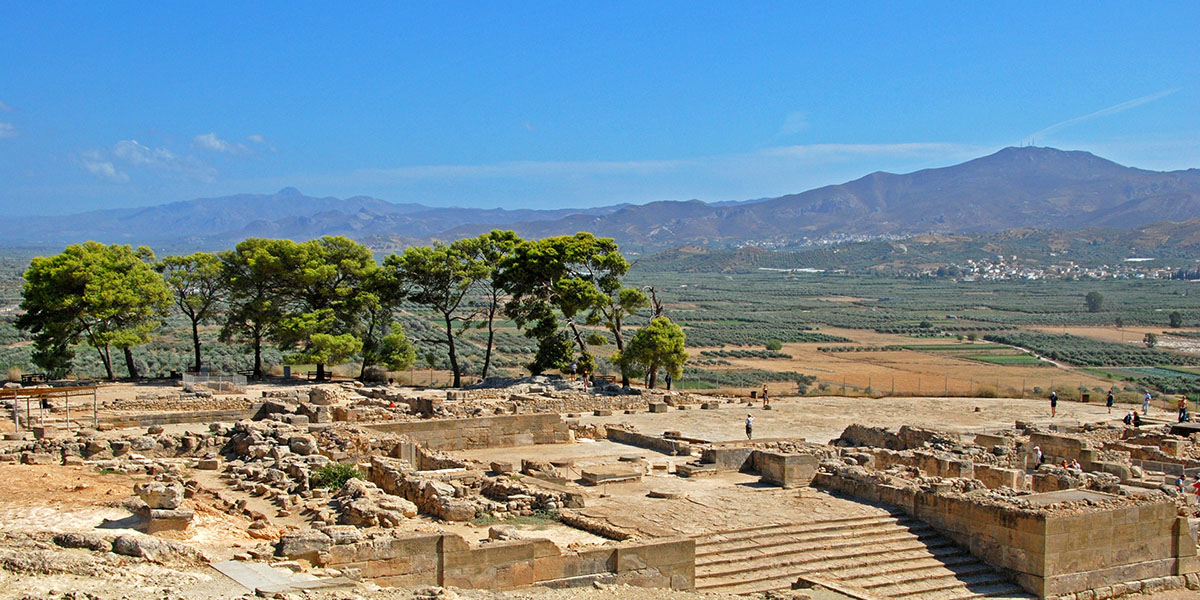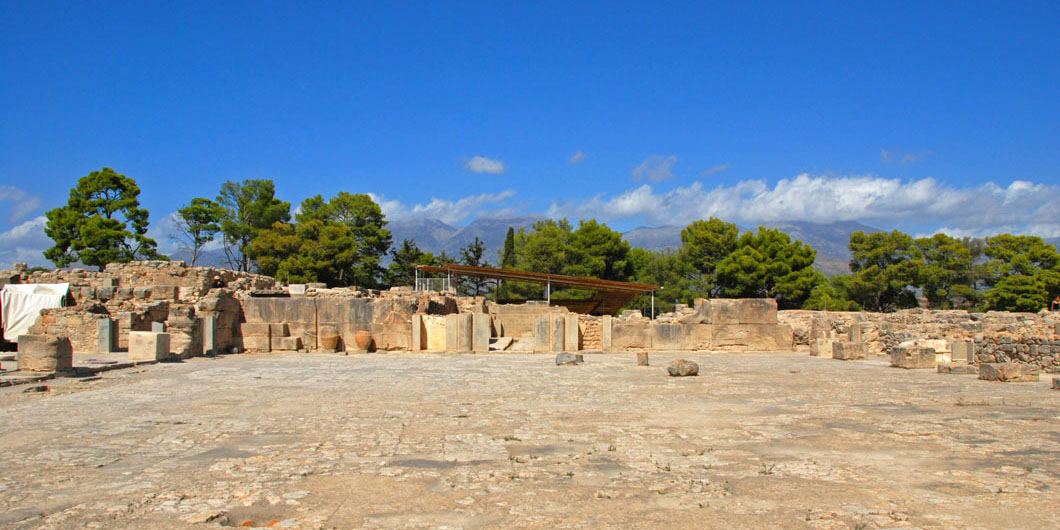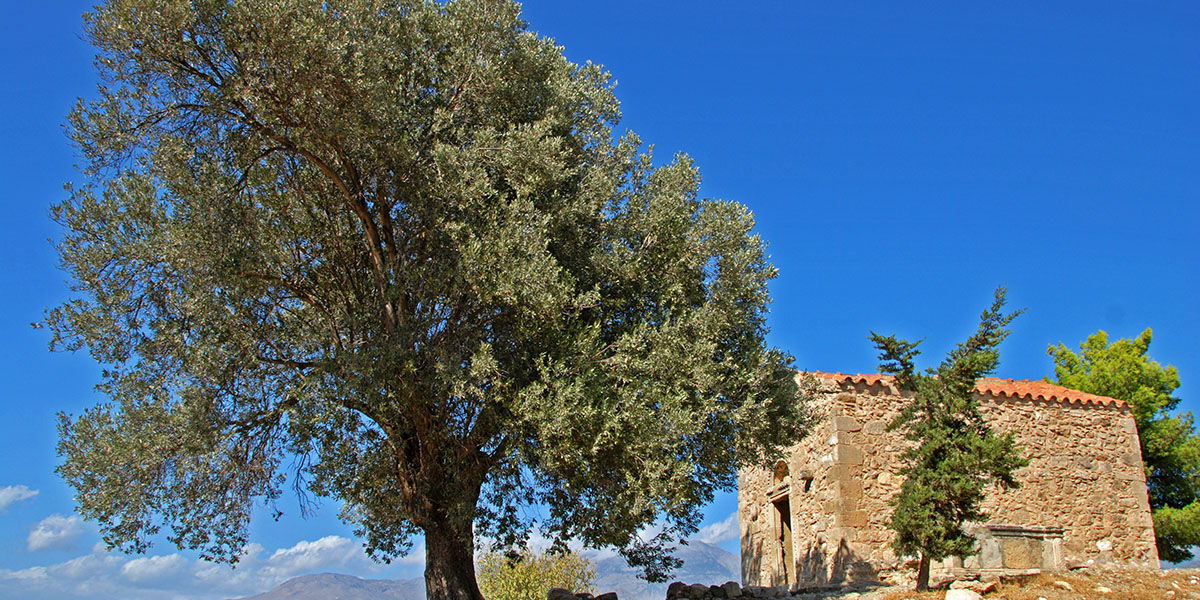The palace complex and the city of Phaistos were built on a hill, offering a panoramic view, especially to the east, to the north, and to the south. The rich and fertile plain of Messara opens up ahead to the east for a distance of 40 kilometres.

On the background, one can see the mountains of Lassithi. To the right, towards the south, the Asterousia mountains come into view. On the left-hand side, to the north, majestic Psiloritis dominates the scenery, together with the verdant hills at its foot. An olive grove with centuries-old olive trees lies to the north-west. Geropotamos river (known as Litheos in ancient Greece) zig-zags beneath the trees, and the Libyan Sea opens up in the distance.
The view is magnificent all day long, especially in the afternoon; this panorama alone makes Phaistos well worth visiting.
Phaistos was the second largest Minoan city, and an important administrative centre of south-central Crete; its influence reached as far as the areas of Amari and Agios Vassilios in Rethymnon, and the whole of the southern part of the Prefecture of Heraklion.
Mythology links Phaistos to Rhadamanthus, a brother of Minos, whose dynasty is believed to have ruled in the city. According to another story, it was founded by Phaistos, a son of Hercules. Homer mentioned that the city took part in the Trojan War, led by Idomeneus, king of Knossos and the whole of Crete.
Habitation of the Phaistos site continued from the Neolithic age until the Hellenistic years (3rd century BC), however the city knew its great acme during the Minoan era. The first palace complex was built circa 1900 BC. Together with the surrounding buildings, it covered 18.000 square metres, an area slightly smaller than that of the palace complex of Knossos. It was destroyed in approximately 1700 BC, only to be reconstructed immediately after, more imposing and luxurious than ever. The restored ruins of this new complex survive today on the site.

The Minoan city covered a large area around the palace complex. In the 15th century BC, a new disaster destroyed Phaistos completely; this bleak destiny was shared by all the Neopalatial Minoan centres, throughout Crete.
However, habitation carried on throughout the Mycenaean and the Geometric years, and Phaistos prospered again. Even though it no longer was the administrative centre of the region, a function which was most likely transferred to Agia Triada, the city continued to expand, to become a populous, wealthy and powerful city-state. Its dominance stretched from Cape Lithino to Cape Melissa (in Sachtouria, Rethymnon), and it controlled two central, busy ports: Kommos and Matala. In the historical years, a large temple, dedicated to the goddess Rhea, was founded south of the Minoan palace complex.
Two of the religious rituals that are believed to have taken place in Phaistos are known to us today: those organized to honour Zeus Belchanos, Lato (Leto) Phytia, Rhea/the Great Mother, and a celebration known as Ekdysia.

Phaistos was in conflict with Gortyn (the other major city-state in south-central Crete) for several years, over supremacy in the area of Messara; finally, in the 2nd century BC, Gortyn conquered and destroyed Phaistos.















